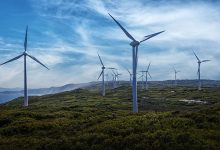The Western Australian Government will be forced to forego hundreds of millions of dollars in dividends, as its state owned energy company Synergy forecasts years of loses, after finding itself increasingly unable to compete with low cost renewable energy.
In figures revealed to the WA Parliament, Synergy has forecast record losses totaling almost $180 million over the next three years, as low energy prices, and the emergence of greater amounts of solar and wind generation put pressure on Synergy’s coal and gas heavy generation fleet.
Increased use of renewable energy in the state has had the combined effect of lower prices and reduced volumes of energy sales for Synergy, with increases in roof-top solar installations continuing a steady base, and Synergy’s own generation portfolio having revenues slashed as a result of lower priced renewables bidding into the large-scale energy market.
The company is also reportedly under pressure from its long-term contract with the Gorgon gas project that has locked in high gas costs. And while the government no longer subsidises the utility, it still can’t get the full cost of its thermal-heavy fleet from consumers.
“At the heart of our challenge is the changing generation profile in the State. Installed rooftop solar capacity for the year grew by 183.6 MW to a total of 918.5 MW, a 25 per cent increase. It is estimated that rooftop solar is now supplying 7 per cent of total South West Interconnected System demand.” Synergy Chairman Robert Cole said in in the company’s 2018 annual report.
“A significant amount of large-scale new renewable generating capacity will be added to the network over the coming years. This major growth in renewable generation, has profound consequences for the dispatch profile of our generation fleet and our cost of generation, as well as our revenue base.”
Synergy revealed late last year that increased adoption of renewable energy in the WA energy system had not just hurt profits, but had also been a hard hit on the generators themselves.
Synergy was forced to take the Cockburn gas fired power station offline for repairs, one the state’s newest gas generators, in light of the toll frequent stop-starts at the plant had taken on the power station.
“(Given) the amount of starts and stops Cockburn has been required to undertake due to the changes in the way system demand takes place, the amount of rooftop solar and other factors, we did identify an issue with Cockburn that required an extended outage to sort out.” Synergy chief Jason Waters said at the time.
The Western Australian government has been hesitant to allow significant increases in electricity prices, approving a modest 1.75% increase in retail electricity prices, in an effort to shield households from rising energy prices.
“Synergy’s profit forecast has been impacted by the lower residential electricity tariff price path announced in this year’s Budget and an increase in network charges from Western Power that have not been passed on to customers in the franchise market,” a spokesperson for Synergy told the ABC.
“Synergy will endeavour to respond to these challenges through Government-approved initiatives, cost management and contractual arrangements where appropriate.”

In addition to rapid growth in rooftop solar installations, large-scale renewable energy has continued strong investment in the state, including the commissioning of the 147.5 MW combined wind and solar Badgingarra Renewable Facility, north of Perth.
This result not only eliminates any dividends that the Western Australian government may have expected to receive from Synergy, but may also leave the state government on the hook to provide loans to cover the cash needed by Synergy to make necessary infrastructure investments.
The state-owned company will be expected to draw down cash-reserves to cover the direct losses, with the WA Government hesitate to slug households in an effort to bridge the revenue gap. Synergy had just over $254 million in cash reserves at the end of the 2018 financial year.
Synergy has previously been a money-spinner for the Western Australian Government, any brought in almost $185 million in profit before tax in the 2014 financial year, most of which was passed through to the government as a dividend. Over the subsequent years, these profits have evaporated, with the Government dividends also drying up.
The Government has ceased the provision of an operating subsidy to Synergy, worth $140 million in 2018, which had previously allowed the company to avoid reporting losses.










